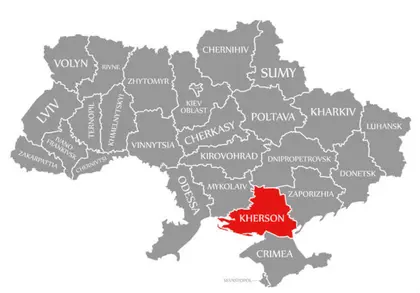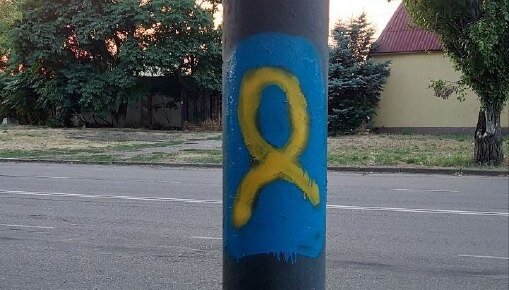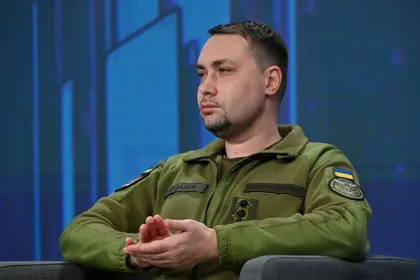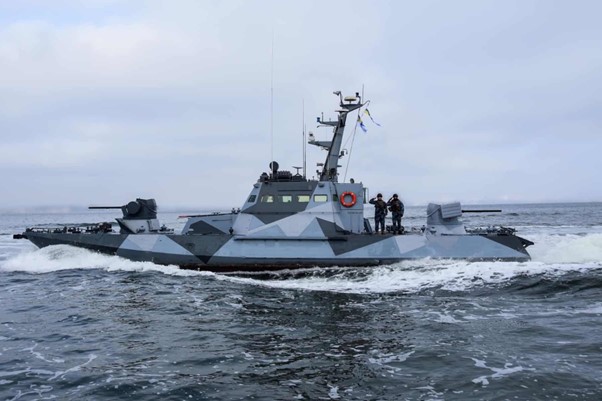Yellow ribbons painted poles or walls suddenly appear in Kherson, the only regional capital city that Russia has captured in this war. The symbol, memorializing missing loved ones, has taken on a new meaning and represents defiance against Russia’s upcoming phoney referendum votes in Kherson and other occupied regions to approve annexation by Russia. Kherson’s vote is scheduled for 9/11 — the anniversary of America’s worst terrorist attack — and only half of its 280,000 residents remain there after it was occupied in March. Russians offer $165 to vote in favor of annexation and may end up forcing most of them to do so. People are being jailed or shot there for protesting, speaking Ukrainian, or refusing to use the Russian Ruble and yet resistance builds. Now Russian soldiers stay off its streets following assassinations and last week its Russian-backed Mayor was poisoned by his chef. Now in the run-up to the vote, a military battle has begun to recapture the region and a great deal rests on its outcome.
Putin plans to stage referenda in four regions — Kherson, Zaporizhzhia (sic), Luhansk, and Donetsk — in the midst of war. Russian advances in the east have been stalled by Ukrainian forces and a counter-attack by Kyiv in the south is underway. The fighting over Zaporizhzhia has garnered the most headlines because its nuclear plant, Europe’s largest, is controlled by 500 Russian soldiers. Shelling around it has sparked global alarm because attacks may result in damage to its six reactors. The United Nations has demanded that experts from the International Atomic Energy Agency occupy the facility and that the region around it be declared a Demilitarized Zone, but Russia has refused. The plant is Putin’s nuclear blackmail card and his control means he can shut it down for the winter, removing 25 per cent of all power generated in Ukraine. Residents nearby are evacuating.

British Defence Intelligence Update Ukraine 27 January 2025
Obviously, Putin’s referendum voting date of 9/11 is designed to spite Washington, and is being hurried by Moscow to “legitimize” ownership to eliminate these territories as concessions in any negotiations. But Ukraine’s President Volodymyr Zelenskyy says if the rigged votes are taken, there will be no negotiations. They have been condemned internationally and Washington described them as “premeditated, illegal and illegitimate”.
JOIN US ON TELEGRAM
Follow our coverage of the war on the @Kyivpost_official.
This is Moscow’s “hybrid war” playbook: occupy then “Russify” territory by killing and driving out Ukrainian majorities and replacing them with Russian transplants or co-opted captives. This is how he took over Crimea in 2014 — a maneuver that has been internationally condemned. In 2014, votes were not taken in Luhansk and Donetsk because Russia’s invasion was stopped midway by a ragtag army of Ukrainian militias and ordinary citizens. The lands were frozen and remained in the hands of Russian military and mercenaries, and a low-grade war continued for eight years as the two sides failed to reach a settlement under the Minsk Agreement, mediated unsuccessfully by Germany and France. The day before the February 24, 2022 invasion, Putin declared them Russian territories and used them as a pretext to invade the entire country.
Kyiv’s counter-attack in Kherson and Zaporizhzhia is strategically important because they control water and power to Crimea and form a land bridge to Russia. Still outgunned, Ukraine deploys long-range artillery and “bee sting” assaults by small teams, guerrillas or special forces. With more high-powered Western weapons, and more en route, Ukraine and Western experts believe this counter-attack will work and achieve several objectives: demoralize, divide, and further degrade Russian forces; prevent the occupation of Odessa and Russian control of the Black Sea coast; and further convince Western backers it can beat a more powerful, but rapidly debilitating, Russia.
Last week, long-range missiles struck the heart of Russian military installations in Crimea, where its sole warm-water naval base is located and which is the supply hub for its military campaign in Ukraine’s southern provinces. Its missiles have also destroyed large supply trains, bridges, roads, and miles of rail lines used to carry Russian troops and munitions from Crimea to Kherson. Other assaults have wiped out a war ship, ammunition depots, and most of the airfields and jet fighters in the surrounding region.
The bombing of Crimea made headlines and crossed two of Putin’s alleged “red lines” – that targets inside Russia cannot be attacked and, secondly, that Western weapons cannot be used to directly attack Russia under threat of retaliation toward NATO. In response, Ukraine said that its military didn’t execute the attack, the missiles were Ukrainian-made not NATO-sourced and that Crimea is not part of Russia but is part of Ukraine.
Retired U.S. Admiral James Stavridis believes Ukraine will win the war this year and noted that “if Ukraine can take back Kherson, a major psychological and geographical target, it controls water supply and key routes into Crimea.” Others maintain Ukraine has only a 50-50 to re-occupy Kherson this fall. But President Volodymyr Zelensky boasted after the Crimea bombing last week that the first invasion of Ukraine began in 2014 with the takeover of Crimea and the “war must end with the liberation of Crimea. It is Ukrainian and we will never give it up.”
A staggering 93 percent of Ukrainians agree and see the future as “rather promising” while 98 percent think Ukraine will win the war, according to a new poll. More than half believe that Ukraine will restore its 1991 borders, winning back Luhansk, Donetsk, Kherson, Zaporizhzhia, and Crimea. Unfortunately, some Europeans, like a group of Italian politicians, are proposing complete capitulation: Ceasefire, a promise of Ukrainian neutrality, Western security guarantees, autonomy for the Donbas (Luhansk and Donetsk) within Ukraine, withdrawal of Russian forces and relaxation of sanctions and the status quo concerning Crimea. This insulting proposal would roll back the clock to 2014 — creating a frozen conflict despite an unprovoked Russian invasion which will simply lead to yet-another Russian invasion.
But Ukrainians are not giving up and fortunately their yellow ribbons proliferate in response to Russia’s fake votes, genocide, war crimes, and subjugation. The color of Ukraine’s hardy sunflowers, this is the symbol of Ukraine’s courage and resistance against Russian genocide, war crimes, and subjugation. And the West must give thanks for that.
You can also highlight the text and press Ctrl + Enter











